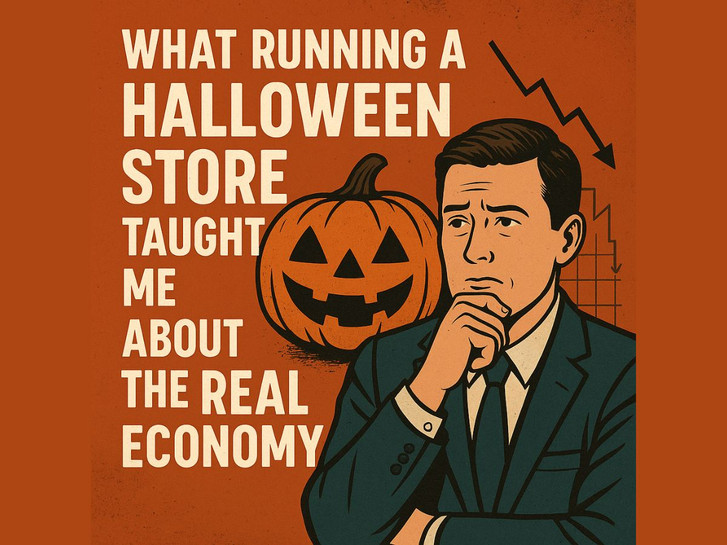What Running a Halloween Store Taught Me About the Real Economy
Most people don’t associate Halloween retail with economics. They think of costumes, props, and scary decorations—not supply chain disruptions, tariff hikes, or unpredictable consumer behavior. But as someone who runs a seasonal e-commerce business focused entirely on Halloween, I’ve learned that economics isn’t just theory. It’s what I live and breathe every day.
Behind every animatronic, collector's mask, or spooky décor item is a strategic decision about sourcing, pricing, and margin—all shaped by market forces far bigger than a haunted house. In fact, I’d argue that Halloween retail is one of the purest examples of applied economics in motion. Here's what I mean:
Real Economics Happens in the Trenches
Every day I make calls that affect my business's survival. Do I adjust my prices due to a sudden 10% import tariff from China? Should I pull a product from TikTok Shop because it’s underperforming and eating fees? Will consumers still pay $399 for a life-size animatronic when gas prices are rising?
These aren’t academic questions. These are decisions made with real dollars, in real time, with real risk. And they reflect the true economy far more accurately than most ivory tower reports published months after the fact.
Small Business Owners ARE the Economy
Every product I list requires balancing cost, markup, perceived value, and platform fees. When the economy shifts, I feel it first. My sales change. My returns change. My ad performance shifts. That’s the front line. That’s where the economy becomes real.
So while professional economists analyze trends from afar, people like me live the microeconomic realities. We adjust, adapt, and evolve—not with models, but with gut instinct backed by sales data.
Seasonal Retail Teaches You More Than a Textbook
Running a Halloween store forces you to make fast decisions with long-term impact. Miss your inventory window? You’re done for the year. Misread consumer sentiment? You eat the loss until next fall. Every decision is economic behavior in action:
-
Tariffs: Reshape entire pricing models overnight.
-
Supply chains: Dictate what I can even sell this year.
-
Demand: Is emotionally driven and price-sensitive.
-
Margin: Is a war between platform fees, shipping, and perception.
Every small business owner running a shop like this is doing the work of economists—just without the title or the ivory tower. But make no mistake: we know the economy because we ARE the economy.
The Next Time Someone Talks About Inflation…
…ask if they’ve ever had to explain to customers why prices went up $20 because of import duties. Or if they’ve ever held off on restocking a best-seller because shipping containers got too expensive.
Business owners don’t need fancy credentials to speak on the economy. We just need people to realize we’re already doing it—every day, in the trenches.
Final Thought
At House of Hauntz, we don't just sell Halloween. We navigate real-world economic forces to make it possible. Whether you're a customer, fellow seller, or just curious how business works in today's world, remember: there's a lot more behind that scary prop than meets the eye.
E-commerce operator.
Supply chain strategist.
Pricing analyst.
Economic actor.
If you’re in the trenches too, you’re part of the economic conversation—whether anyone gave you the title or not.

